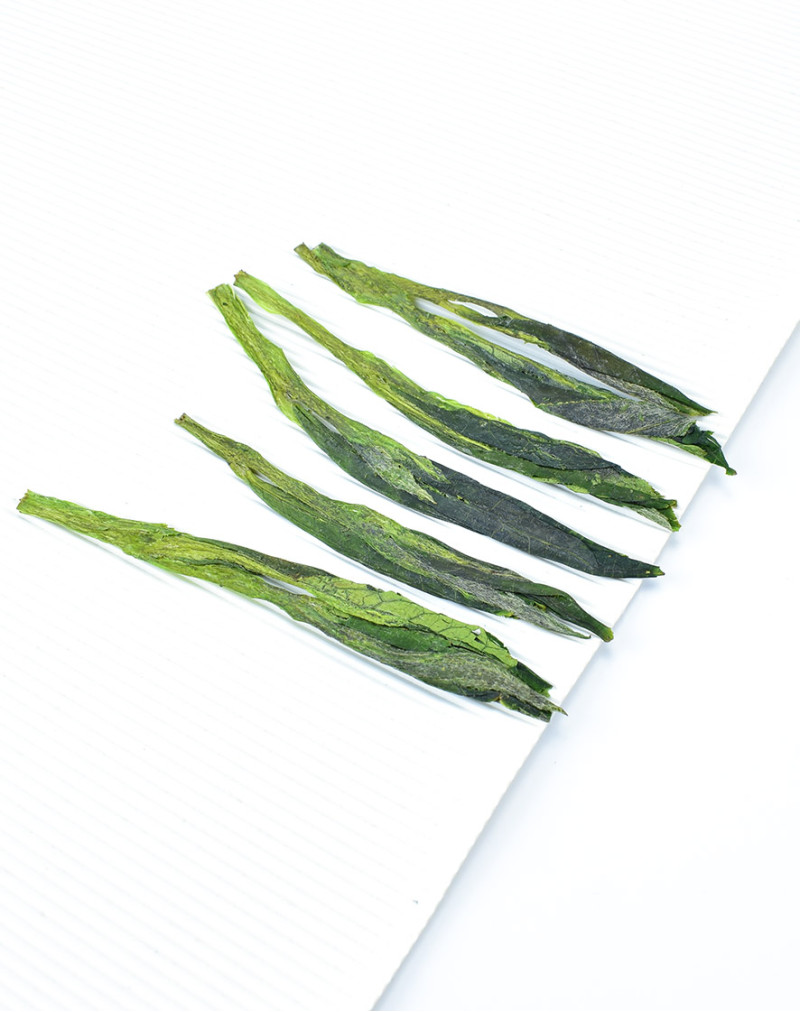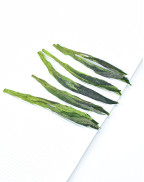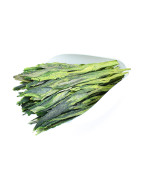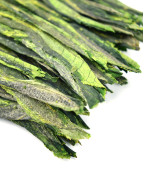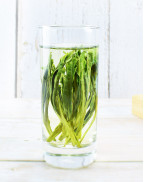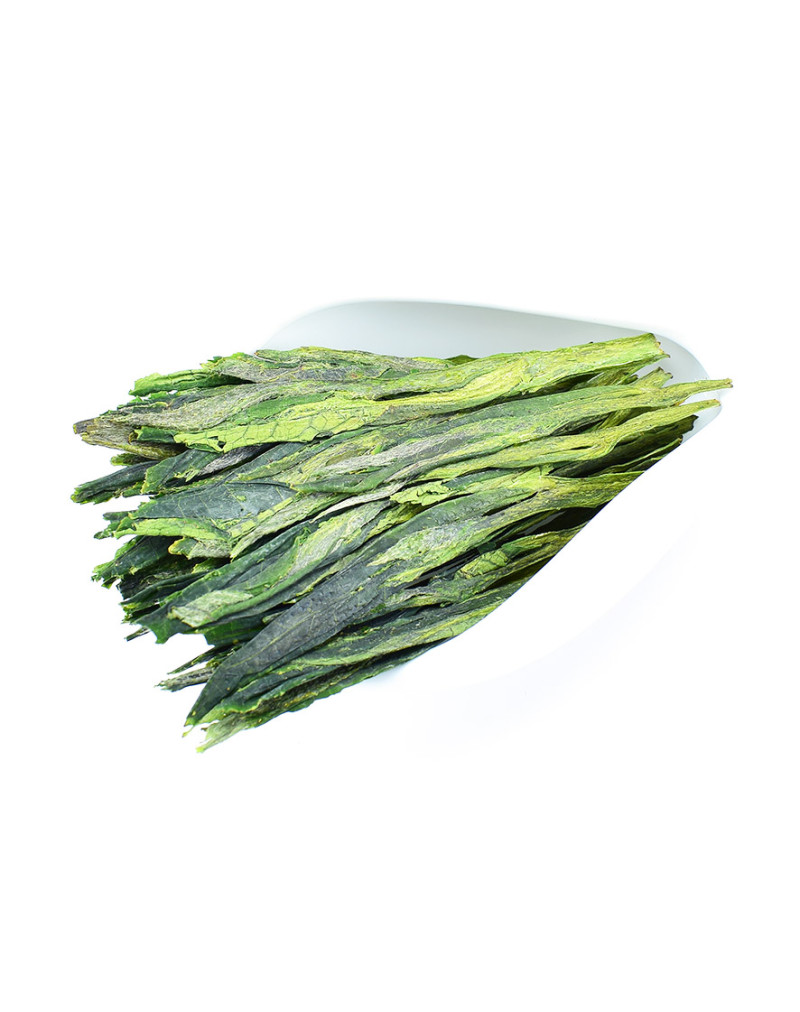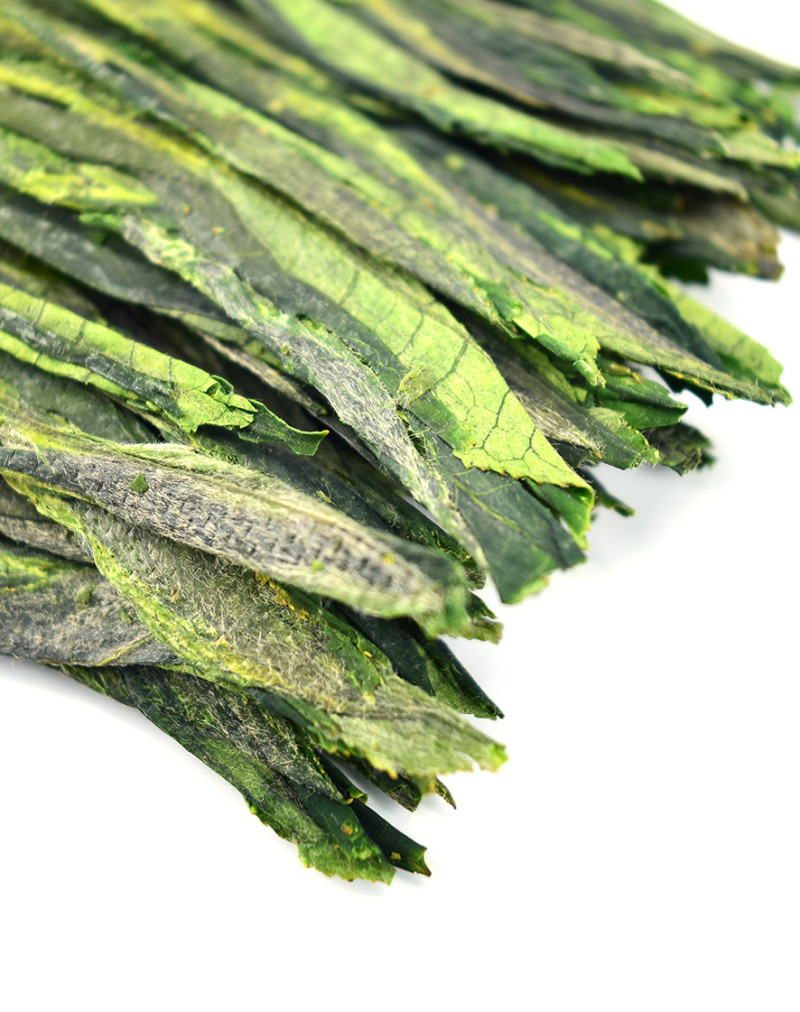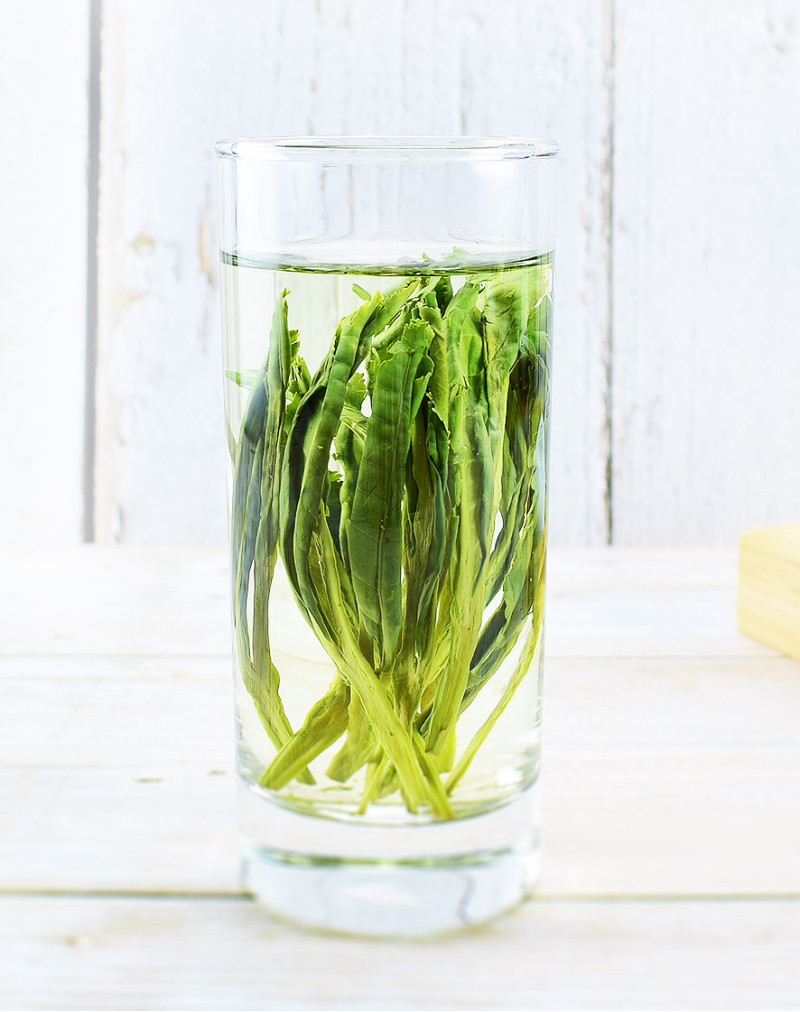Tai Ping Hou Kui Green Tea
- Product Code: simple
- Availability: In Stock
Basic Info
Name: Tai Ping Hou Kui Green Tea
Other Names: Taiping Houkui
Origin: Huangshan City, Anhui Province, China
Taste & Aroma:Highly refreshing,smooth,mellow,grassy,long-lasting,brisk,orchid scent,sweet aftertaste
Tea Garden: Taiping Houkui Ecological Tea Garden, Houkeng Village
Liquor: Clear,bright and transparent,with very light yellowish green color
Dry Leaf: Flat, evenly sized,fleshy,thick,robust,straight with tips
Harvest Date: Apr 23, 2024
Altitude: 700M above sea
Fermentation: None
Season: Spring tea
Item Form: Loose leaves
Ingredients: Hand-picked natural tea buds and leaves /100% hand-picked natural tea buds and leaves
Shelf Life: 10 months at room temperature / 18 months with low temperature storage
Storage: Stored in cool, airtight, opaque containers - refrigeration is recommended
Flavor: Unflavored
Sourcing : Teapooo
Caffeine: Low
Tai Ping Hou Kui Green Tea
Introduction
As a traditional famous tea, Tai Ping Hou Kui has long been on the list of China's top ten famous teas. According to its appearance, It is included in the group of sharp-shaped (尖茶 Jian-cha) for its pointed shape on both sides. It is produced in Taiping County, Anhui Province (now Huangshan District, Huangshan City). It is the best sharp-shaped tea and has enjoyed a long reputation.In the past for a long time, it was little known due to the low yield.
legend 1
Legend has it that one day in ancient times, a villager suddenly smelled a refreshing fragrance while picking tea in the mountains. He was puzzled, but he was driven by curiosity to look around, and after a careful search he found a few bushes of wild tea trees among the rocks and weeds.But he was suffering from no tools, and the cliff was too smooth to climb,so he finally reluctantly returned home. The strange smell made him restless for a long time, and he could not forget the wild tea plants.To pick the few wild tea plants from the cliff, Later, he trained several monkeys so that during the tea-picking season every year, he would put cloth on the monkeys and let them go climbing and plucking instead of him. After tasting this tea, people called it "the kui of tea 茶中之魁(ranked number one in teas,魁 menas the best in Chinese)”, and because this tea was picked by monkeys, later generations simply named it “猴魁茶(Hou kui tea)".
legend 2

Show Full Description
The second legend is more mythological.It is said that in ancient times, there lived a couple of white hairy monkeys in Huangshan mountains. They gave birth to a little hairy monkey. One day, the little hairy monkey went out to play alone in Taiping County and got lost in the fog.He did not return to Huangshan on time. The old hairy monkey searched everywhere for his son. A few days later, he died of illness in a mountain pit in Taiping County due to his eagerness to find his son and exhaustion.There lived an old man in the mountain pit. He was kind-hearted and lived by collecting wild tea and medicinal materials. When he found this sick and dead monkey, he buried it on the hill and moved several wild tea and flowers to plant beside the grave of the old monkey. As he was leaving, he heard a voice saying, "Old man, You have done something good for me,I must thank you”.But no one was there, and the old man didn't care about it.In the spring of the next year, the old man came to the mountain to pick wild tea, and found that there were green tea trees all over the mountain. The old man was wondering when he heard someone say to him, "I gave you these tea trees. You can cultivate them well so that you can make a living." Hearing this, the old man understood that these tea trees were given by the monkey god. Since then, the old man owned this tea hill, he no longer had to cross mountains to pick wild tea.To commemorate the monkey, the old man called this mountain Monkey Hill, the mountain pit he lived in was called Monkey Pit (猴坑), and the tea from Monkey Hill was called Monkey Tea. Since the quality of monkey tea is superior, it can be considered the best tea.. Later, the tea was named Tai Ping Monkey Kui.
History
During the reign of Xianfeng in Qing Dynasty (1636 - 1912), Zheng Shouqing, a native of Taiping County,opened a tea garden in the mountains along the banks of the Machan River and produced a kind of flat and straight "sharp-shaped tea(尖茶 Jian-cha)"with fresh taste and fragrance of orchids, named “Tai Ping Jian Cha".
It is widely believed that Tai Ping Jian Cha is the predecessor of Tai Ping Hou Kui tea.

In the middle and late Guangxu years of Qing Dynasty (1636 - 1912), Taiping people opened hundreds of tea houses, tea shops and tea stacks in Nanjing, Yangzhou, Wuhan and other places. Taiping tea was very popular in the Yangtze River basin at that time.
In order to increase tea variety, improve the product grade and earn higher commercial profits, some shrewd tea merchants in Nanjing ordered workers to pick up tea leaves of uniform size,and separately package it into a new tea and transport it to Nanjing for sale at a high price. These carefully selected good-looking teas are highly welcomed, and these merchants made a lot of money.
Wang Kuicheng (王魁成), a tea farmer who lives in Hougang, has rich experience in tea production. He is especially good at tea processing and has a quick mind. Inspired by this, he thinks that it is better to start to select and make fine tea leaves when picking fresh leaves rather than picking them after they are already processed. So he made a new kind of tea with good quality from the carefully selected fresh leaves which contained one bud with 1-2 leaves in a mountain tea garden 750 meters above sea level.

As the quality of this tea is considered to be the first among all kinds of sharp-shaped teas and it’s inventor is also called Kui Cheng (魁成). In addition, this tea is produced in Houkeng and Hougang areas of Taiping County, so it is called “Tai Ping Hou Kui". This should be the most logical statement about the origin of this tea.
In 1972, when US President Richard Nixon visited China, then Premier Zhou Enlai gave him a packet of Taiping monkey kui as a gift.In 2004, the tea won the title of "King of Green Tea" in the International Tea Fair.In the 2007 Russian "Year of China" activity, Taiping Houkui was selected as the national gift tea and presented it to Russian President Putin.

Anhui Province is a renowned tea-producing region in China for several reasons
Firstly, Anhui's unique geographic location provides an ideal environment for growing tea. The province is located in the eastern part of China, which has a humid subtropical climate and abundant rainfall, making it an excellent place for tea cultivation. Secondly, Anhui Province has a long history of tea production and a rich tea culture. The province has been producing tea for over 1,500 years, and the local tea farmers have developed unique techniques for growing and processing tea, resulting in a range of high-quality teas that are well-regarded both domestically and internationally.Thirdly, Anhui Province has a diverse range of tea varieties, each with its own distinctive flavor and aroma. From the floral and fruity Keemun black tea to the nutty and sweet Lu'an Guapian green tea, Anhui produces a wide variety of teas to suit different tastes.Lastly, Anhui's tea industry is supported by a strong infrastructure of tea gardens, tea factories, and tea research institutions, which have helped to maintain the quality and reputation of Anhui's teas. All these factors contribute to Anhui's status as one of the most important tea-producing regions in China, and indeed the world. Anhui Province is a famous tea growing region in China. You can find some good tea from Anhui on our website, such as Lu An Gua Pian (Melon Seed) Green Tea , Huang Shan Mao Feng Green Tea , Keemun Aromatic Snail Black Tea .
Producing areas
The birthplace of Taiping Houkui is Houkeng Village, Taiping County, Huangshan, Anhui Province, which is located at 30 ° north latitude and above 600 meters above sea level. It is surrounded by mountains on three sides and Taiping Lake, known as the "Oriental Geneva Lake", on one side. Houkeng Village has a humid climate and is covered by cloud cage fog all the year round. It is a good place for tea growing. Therefore, it is often said that "only the tea from Houkeng Village can be called Taiping Houkui". In order to take advantage of the reputation of Taiping Houkui, some teas were taken to Houkeng Village by people from surrounding production areas to pretend to be real Taiping Houkui for processing or selling. In order to curb this kind of cheating, during the annual tea picking season, the managers of Houkeng Village will check everyone who enters the village to prevent fake tea from entering Houkeng Village. Now, the main production area of Taiping Houkui is located in Houkeng, Hougang and Yanjia, Sanmen Village, Xinming Township. The quality of the tea harvested from Houkeng Mountain Tea Garden is the best. Tea gardens are distributed in the middle and low mountains above 350 meters, where the black sandy soil layer is deep and rich in organic matter. Anhui Province is a famous tea growing region in China. You can find some good tea from Anhui on our website, such as Huangshan Maofeng, Qimen Black Tea, Lu 'an Guapian.
Characteristics
One of the appearance characteristics of Tai Ping Hou Kui tea is its one bud which is embraced by two flattened leaves covered with visible silver duvet and naturally stretched.Compared to other teas,Tai Ping Hou Kui is not particularly downy, and they are tightly pressed against the leaf surface.The leaves of genuine Tai Ping Hou Kui tea are in light green color,not twisted and can produce long-lasting orchid-like scent when brewed.The fine leaves produce a clear,greenish brew with a distinctive orchid scent which is particular prominent in the fist brew.Tai Ping Hou Kui tea can be infused up to 4 times, releasing slightly different notes each time. When brewed in a glass,the buds and leaves gracefully suspends and sways in the glass giving the tea drinker a sense of calm from inside to outside.
Picking standards
Every spring, when the Tai Ping Hou Kui twig has just grown to one bud and three leaves, that is, around the time Grain Rain (6th solar term), tea workers begin to pick Taiping Houkui tea. In the following days, a new batch of Taiping Houkui tea will be picked every 3-4 days until the Beginning of Summer (7th solar term). The fresh leaves collected after the Beginning of Summer can only be used to make 尖茶 Jian-cha,a slightly inferior quality tea.
As with other famous Chinese teas, the fresh leaves of Tai Ping Hou Kui tea are harvested according to certain standards.To get good quality Hou Kui tea, fresh leaves are allowed to be plucked only in the following four circumstances:
1. Mountain (拣山 Jian Shan)- Picking leaves and buds from high mountains with rich water vapor,shade, and often shrouded by mist and clouds
2. Bush (拣丛 Jian Cong) - Picking leaves and buds of luxuriant Shi Da Cultivar (柿大品种) tea trees.
3.Branch (拣枝 Jian Zhi)- Picking leaves and buds on thick,robust,healthy and straight branches.
4. The fresh tea leaves collected need to be undergone (拣尖 Jian Jian) step immediately. This is a special process step in the production of Tai Ping Hou Kui tea. The thrid leaf need to be broken off from the stem of the second leaf, leaving one bud and two leaves, the rest part commonly known as "pointed head". In addition, if the leaves and buds meet the following 8 criteria, they cannot be used:1.Bud and leaf that is too small 2..Bud and leaf is too big 3.emaciated thin bud 4.pale in color 5.purple buds/leaves6.对夹叶(Two opposite leaves growing near the terminal bud at a new point where the terminal bud has stopped growing)7.Buds and leaves that have been damaged by pests 8.Buds or leaves not straight.It takes a whole day to make Tai Ping Hou Kui tea. Picking activities generally take place in the morning on a sunny day, and the "selecting" process is finished at noon or afternoon. The fresh leaves picked on the same day shall be made into dry tea on the same day.

Processing Steps
The Making of Tai Ping Hou Kui tea involves the following steps: Plucking->Selecting->Pan frying->Fixation(kill-green)->First baking(heating)->Second baking(heating)->Third baking(heating)->Cooling->Packing :
殺青 (Sha Qing) / Kill-green (fixation)
The diameter of the barrel-shaped wok used for fixation is about 70cm, and the wall of the wok should be smooth and clean. Each wok, heated with wood charcoal,can handle 75-100g fresh leaves a time when its temperature reaches up to about 110℃ .The purpose of this step is to stop the tea leaf oxidation at a desired level and deactivate their oxidative enzymes and removing unwanted scents in the leaves.
First Baking
Usually a killed-green wok needs to be paired with four baking bamboo baskets which are heated with different temperatures from high to low in order of 100℃, 90℃, 80℃, 70℃. After the kill-green (fixation), tea maker spreads the leaves on the top of the first baking bamboo basket and then gently knock the edge of the basket to scatter the leaves and pat the basket top with palms to spread the leaves evenly, and heat for 2-3 mins. When the leaves lose water to a certain level, they are transfered to the second baking bamboo baskets and arranged by handsto make them evenly dispersed and straightly shaped and also need to be heated for 2-3 minutes. Repeat the same procedure in the third baking bamboo basket until in the fourth basket within which the leaves are dry and fragile, no more pressure can be applied. When the leaves are 60 to 70 percent dry, remove the leaves from the baking basket and let them cool.
Second Baking
The temperature of the baking bamboo basket (烘笼 Hong long) is about 70℃. Each time can handle 250g tea leaves. As in the previous step, when the leaves reach a certain temperature, the tea leaves need to be gently pressed with the palm of the hand or a brocade cushion to stabilize the shape.Leaves have to be turned in every 4-5 minutes, repeated for 5-6 times. When leaves are 90% dry,they are need to be moved out and cooled in air.
Third Baking
This step is also called 打老火 (Da Lao Huo).The leaves will be placed on top of baking bamboo basket for the final heating at 60℃.Again, tea leaves have to be turned in every 5 mins,repeated for 5-6 times.Low temperature and gentle handling are key factors in this step. When the moisture is reduced to an ideal level, the tea leaves are transferred to bamboo barrels with a layer of Ruo (箬) leaves at the bottom to enhance the aroma of Tai Ping Hou kui tea . When the tea leaves have cooled, they are sealed with a lid and stored for preservation.
With its rich history and exceptional craftsmanship, Tai Ping Hou Kui Green Tea is a must-try for any tea enthusiast. Treat yourself to a truly luxurious tea experience and elevate your daily rituals with a cup of our finest Tai Ping Hou Kui Green Tea. Experience the true essence of Chinese tea culture with every sip. Buy now and immerse yourself in the world of premium tea.
| Chinese Gongfu Method | |
| Tea | 3g |
| Water | Gaiwan 3oz / 90ml |
| Time | 4 steeps (15s,30s,1m,1m20s) |
| Temperature | 90°c |
| Teapot Method | |
| Tea | 5g |
| Water | Teapot (8oz / 240ml) |
| Time | 1- 4mins |
| Temperature | 90°c |


